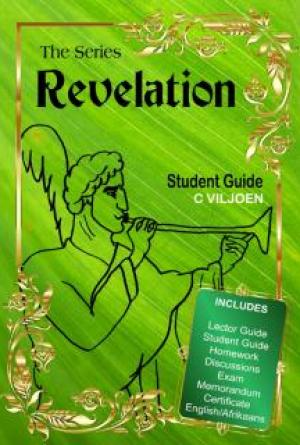carefully considered.
3. Is now the right time for you to go back to school? Although there are numerous
night and online classes hat you can take, you will definitely need to consider what you
will do when the time comes for you to take daytime classes, which are often inevitable
depending on your degree plan. Is your work and home life going to allow you to go
back to school and give it the necessary amount of attention it will require from you in
order to succeed? Are you ready to commit yourself to a program and stick to it? If not,
you'll have a hard time juggling life and your educational goals.
29 | P a g e
© Tanya
Knight International, Inc. 2011
4. Will a continuing education program achieve your goals? In many instances, you
do not need to go back to school full-time. Rather, you may be able to find a continuing
education program that will meet both your short and long-term goals. On the other
hand, those programs hat do not meet your needs will only be a waste of time and
money.
5. How will you pay for college? As an adult, there may be some financial aid available to
you, but depending on your current income, you may not be able to expect much from the
government. You will need to create a plan as to how you will pay for your education and
whether or not you will take out student loans. You will also need to develop a plan for
how those loans will be paid back in a timely manner, you don't want them haunting you
the rest of your adult life.
Finally, the adult going back to college or going to college for the first time needs to determine if
they have enough support to be successful and meet their goals. You can only achieve these
goals by making some sacrifices in life. This may mean missing your child's football game
because you have a night class. If you are married, you may have to make more adjustments in
your life and the support of your spouse will be a necessity. They must support you in your
goals as well as help you to ensure that you are able to maintain your responsibilities to the
family as well. You must both have the same goals and they must be willing to help you work
towards them while you go to school.
FITTING IN: NEW CHALLENGES AND EXPERIENCES FOR THE ADULT LEARNER
Your first day of college is undoubtedly going to be an interesting one for you. You will be
surrounded by college students who will range in age from 17 or 18 to 25 or older. However,
don't be surprised to see a few people who are closer to your age as well, as more and more
adults are going back to school to continue their educations. But, your focus here isn't really
going to be on fitting in with this younger crowd or making new friends. In fact, many of you will
have the same goals, focusing on school and graduating.
There are several ways you can fit in and prepare for college. First, take a tour of the campus
so you know where everything is. Colleges often have guided tours available that will kit all of
the key buildings and offices that you will need to use at various points in your college career.
30 | P a g e
© Tanya
Knight International, Inc. 2011
Many schools also offer orientation sessions for adult students. These are a great opportunity
for meeting other adults that are going back to school as well as become more familiar with the
college itself.
When you attend classes, don't be afraid to contribute in class discussions. However, you also
don't want to appear to be a "know it all" either. Don't dominate the class discussion, even if the conversation is something you're very familiar with and have experience in. One thing that you
will find when going back to school is that age is relative. There's going to be a mix between
young and old and many adult students are often surprised when they meet someone who is
even older than them in the class – even in freshman level classes.
THE ADMISSIONS PROCESS
As far as the admission process for college goes for adults, it's pretty much the same as all
other students. You will be required to apply, you'll have to supply transcripts and test scores.
Don't worry, you're high school should still have your transcripts on file, even if it has been 20
years since you graduated!
However, depending on the state that you live in, you may be required to take some entrance
exams. These are generally used to determine your English, Math and Science skills.
Depending on the college and state, many adult students are exempt from these tests
depending on when they graduated from high school, but others may be required to take these
tests. Entrance exams are generally administered by a counseling office or testing center
located on campus. These scores are used to determine which courses you must begin with.
For instance, a low score in math may require that you take some pre-requisite courses before
you are allowed to take College Algebra or more advanced math courses.
SAT I or ACT scores are often waived for those applicants who have been out of school for five
years or more or if you're a veteran and served in the military for four years with an honorable
discharge.
Depending on the college you choose to attend, you may find that the school has a department
specifically designed to assist adult learners and evening students. They are able to guide you
through the admissions process.
31 | P a g e
© Tanya Knight International, Inc. 2011
APPENDICES
THE
FOLLOWING
PAGES
INCLUDE
EXCERCISES,
SCHOLARSHIPS
AND
INSPIRATIONAL
QUOTES
THAT
MAY
HELP
YOU
PREPARE
YOURSELF
FOR
COLLEGE
AND
ALSO
DETERMINE
WHICH
COLLEGE
TO
ATTEND
32 | P a g e
© Tanya Knight International, Inc. 2011
EXERCISES
Help Your Child Think About a Career
Step 1:
Using the form on the next page, sit down with your child and make a list of jobs that sound
interesting. It may help to first think about friends or people you've read about or have seen on
television that have interesting jobs. List those jobs in the left-hand column. If your child cannot
think of interesting jobs, have him or her list subject areas of interest. Then, try to help your child identify jobs in those subject areas. Depending on the job, there may be courses in middle
school or high school that will give your child a preview of the type of knowledge that is needed
for the particular job. In the right-hand "Education" column, write down the level of education required for the job and any high school or college courses that may help your child prepare for
such a career.
Step 2:
Take the form to your local library and, with the help of a reference librarian, locate books and
search the internet for information on some of the careers your child has selected. Libraries
usually have directories that list career requirements. It is not a problem if your child does not
know what career path he or she wants to follow; his or her focus during these years should be
on doing well in school.
33 | P a g e
© Tanya Knight International, Inc. 2011
Careers of Interest and the Education They Require
Career or Job
Education
1.
High School:
College:
2.
High School:
College:
3.
High School:
College:
4.
High School:
College:
5.
High School:
34 | P a g e
© Tanya Knight International, Inc. 2011
Using the form below, help your child list the colleges he or she knows about and might be
interested in attending. Write down whether they are two-year or four-year colleges or
universities. Ask your child why these schools are appealing to him or her. You and your child
may want to contact the colleges to get more information.
College Inquiries
Date,
Two-Year
Date
Address,
Names,
College
or
Why Appealing?
Received
Location
and Phone
Four-Year
Information
Number
35 | P a g e
© Tanya Knight International, Inc. 2011
This exercise will give you and your child a chance to look ahead and choose future courses. Be
aware that some courses must be taken in sequence. On the form below, list your child's current
courses or courses he or she will take this year. Then list courses that he or she will take during
each year of high school. If you are not sure what courses your child should take, make an
appointment with your child's guidance counselor to get some advice.
EXERCISE
Course Planner for Parent and Student
Grade
Grade
Grade
Grade
Fall
Spring
Fall
Spring
Fall
Spring
Fall
Spring
Semester Semester Semester Semester Semester Semester Semester Semester
English
Full course
title:
Mathematics
Full course
title:
History/Social
Studies
Full course
title:
36 | P a g e
© Tanya Knight International, Inc. 2011
Science
Full course
title:
Foreign
Language
Full course
title:
Other
Full course
title:
37 | P a g e
© Tanya Knight International, Inc. 2011
GLOSSARY
OF
TERMS
Below is a glossary of some terms that you may want to remember:
A.A.:
This stands for an "associate of arts" degree, which can be earned at most two-year colleges.
A.A.S.:
This refers to an "associate of applied science" degree, which can be earned at some two-year colleges.
ACT:
This is a test published by American College Testing, which is located in Iowa City, Iowa. The
ACT measures a student's aptitude in English, mathematics, reading, and science reasoning.
Many colleges in the South and Midwest require students to take this test and submit their test
scores when they apply for admission. Some colleges accept this test or the SAT. (See below
for explanation of SAT.) Most students take the ACT or the SAT during their junior or senior
year of high school.
B.A. or B.S.:
B.A. stands for "bachelor of arts," and B.S. stands for "bachelor of science." Both degrees can be earned at four-year colleges.
Default Rate:
The default rate is the percentage of students who took out federal student loans to help pay
their expenses but did not repay them properly.
38 | P a g e
© Tanya Knight International, Inc. 2011
Dividends:
Dividends are payments of part of a company's earnings to people who hold stock in the
company.
Expected Family Contribution (EFC):
An amount, determined by a formula that is specified by law, that indicates how much of a
family's financial resources should be available to help pay for school. Factors such as taxable
and non-taxable income, assets (such as savings and checking accounts), and benefits (for
example, unemployment or Social Security) are all considered in this calculation. The EFC is
used in determining eligibility for federal need-based aid.
Fees:
These are charges that cover costs not associated with the student's course load, such as costs
of some athletic activities, clubs, and special events.
Financial Aid:
Financial aid, in this handbook, refers to money available from various sources to help students
pay for college.
Financial Aid Package:
The total amount of financial aid a student receives. Federal and non-federal aids (such as
grants, loans, or work-study) are combined in a "package" to help meet the student's need.
Using available resources to give each student the best possible package of aid is one of the
major responsibilities of a school's financial aid administrator.
Financial Need:
In the context of student financial aid, financial need is equal to the cost of education (estimated
costs for college attendance and basic living expenses) minus the expected family contribution
(the amount a student's family is expected to pay, which varies according to the family's
financial resources).
39 | P a g e
© Tanya Knight International, Inc. 2011
General Educational Development (GED) Diploma:
The certificate students receive if they have passed a high school equivalency test. Students
who don't have a high school diploma but who have a GED will still qualify for federal student
aid.
Grant:
A grant is a sum of money given to a student for the purposes of paying at least part of the cost
of college. A grant does not have to be repaid.
Interest:
This refers to the amount that your money earns when it is kept in a savings instrument.
Investment:
In this guide, an investment refers to using your money to invest in something that will enable
you to earn interest or dividends over time.
Liquidity:
A term that refers to how quickly you can gain access to money that you invest or deposit in a
savings instrument.
Loan:
A loan is a type of financial aid that is available to students and to their parents. An education
loan must be repaid. In many cases, however, payments do not begin until the student finishes
school.
Merit-based Financial Aid:
This kind of financial aid is given to students who meet requirements not related to financial
needs. Most merit-based aid is awarded on the basis of academic performance or potential and
is given in the form of scholarships or grants.
40 | P a g e
© Tanya Knight International, Inc. 2011
Need-based Financial Aid:
This kind of financial aid is given to students who are determined to be in financial need of
assistance, based on their income, assets, and their families' income and assets, as well as
other factors.
Open Admissions:
This term means that a college admits most or al students who apply to the school. At some
colleges, it means that anyone who has a high school diploma or a GED can enroll. At other
schools, it means that anyone over 18 can enroll. "Open admissions," therefore, can mean
slightly different things at different schools.
Pell Grants:
These are federal need-based grants. The annual award limits are: $976 to $5,350 (subject to
change)
Perkins Loans:
This is a federal financial aid program that consists of low-interest loans for undergraduates and
graduate students with exceptional financial need. Loans are awarded by the school.
PLUS Loans:
These federal loans allow parents to borrow money for their children's college education.
Postsecondary:
This term means "after high school" and refers to all programs for high school graduates,
including programs at two-year and four-year colleges and vocational or technical schools.
Principal:
This refers to the face value or the amount of money you place in a savings instrument on which
interest is earned.
Proprietary:
This is a term used to describe postsecondary schools that are private and are legally permitted
to make a profit. Most proprietary schools offer technical and vocational courses.
41 | P a g e
© Tanya Knight International, Inc. 2011
PSAT/NMSQT:
This stands for the Preliminary Scholastic Assessment Test/National Merit Scholarship
Qualifying Test, a practice test that helps students prepare for the Scholastic Assessment Test
(SAT I). The PSAT is usual y administered to tenth or eleventh grade students. Although
colleges do not see a student's PSAT/NMSQT score, a student who does very well on this test
and who meets many other academic performance criteria may qualify for the National Merit
Scholarship Program.
Return:
Return refers to the amount of money you earn through a financial investment or savings
instrument. You earn money on investments and savings instruments through interest earnings
or dividends.
Risk:
In reference to saving or investing, risk refers to the danger of losing money you set aside in
some kind of savings plan.
ROTC:
This stands for Reserve Officers Training Corps program, which is a scholarship program
wherein the military covers the cost of tuition, fees, and textbooks and also provides a monthly
allowance. Scholarship recipients participate in summer training while in col ege and fulfill a
service commitment after college.
SAT:
This stands for the Scholastic Assessment Test, published by the College Board, a non-profit
organization with headquarters in New York City. The SAT is a test that measures a student's
mathematical and verbal reasoning abilities. Many colleges in the East and West require
students to take the SAT and to submit their test scores when they apply for admission. Some
colleges accept this test or the ACT. (See above for an explanation of the ACT.) Most students take the SAT or the ACT during their junior or senior year of high school.
42 | P a g e
© Ta







